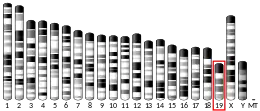| CEP78 | |||||||||||||||||||||||||||||||||||||||||||||||||||
|---|---|---|---|---|---|---|---|---|---|---|---|---|---|---|---|---|---|---|---|---|---|---|---|---|---|---|---|---|---|---|---|---|---|---|---|---|---|---|---|---|---|---|---|---|---|---|---|---|---|---|---|
| Identifiers | |||||||||||||||||||||||||||||||||||||||||||||||||||
| Aliases | CEP78, C9orf81, IP63, centrosomal protein 78, CRDHL | ||||||||||||||||||||||||||||||||||||||||||||||||||
| External IDs | OMIM: 617110 MGI: 1924386 HomoloGene: 11030 GeneCards: CEP78 | ||||||||||||||||||||||||||||||||||||||||||||||||||
| |||||||||||||||||||||||||||||||||||||||||||||||||||
| |||||||||||||||||||||||||||||||||||||||||||||||||||
| |||||||||||||||||||||||||||||||||||||||||||||||||||
| |||||||||||||||||||||||||||||||||||||||||||||||||||
| Wikidata | |||||||||||||||||||||||||||||||||||||||||||||||||||
| |||||||||||||||||||||||||||||||||||||||||||||||||||
Centrosomal protein of 78 kDa, also known as Cep78, is a protein that in humans is encoded by the CEP78 gene.[5][6]
Clinical
Mutations in this gene have been associated with cone-rod dystrophy with hearing loss.[7]
References
- 1 2 3 GRCh38: Ensembl release 89: ENSG00000148019 - Ensembl, May 2017
- 1 2 3 GRCm38: Ensembl release 89: ENSMUSG00000041491 - Ensembl, May 2017
- ↑ "Human PubMed Reference:". National Center for Biotechnology Information, U.S. National Library of Medicine.
- ↑ "Mouse PubMed Reference:". National Center for Biotechnology Information, U.S. National Library of Medicine.
- ↑ "Entrez Gene: centrosomal protein 78kDa".
- ↑ Andersen JS, Wilkinson CJ, Mayor T, Mortensen P, Nigg EA, Mann M (December 2003). "Proteomic characterization of the human centrosome by protein correlation profiling". Nature. 426 (6966): 570–4. Bibcode:2003Natur.426..570A. doi:10.1038/nature02166. PMID 14654843. S2CID 4427303.
- ↑ Ascari G, Peelman F, Farinelli P, Rosseel T, Lambrechts N, Wunderlich KA, Wagner M, Nikopoulos K, Martens P, Balikova I, Derycke L, Holtappels G, Krysko O, Van Laethem T1, De Jaegere S1, Guillemyn B1, De Rycke R13,14, De Bleecker J1, Creytens D, Van Dorpe J, Gerris J, Bachert C, Neuhofer C, Walraedt S, Bischoff A, Pedersen LB, Klopstock T, Rivolta C, Leroy BP, De Baere E, Coppieters F (2020) Functional characterization of the first missense variant in CEP78, a founder allele associated with cone-rod dystrophy, hearing loss and reduced male fertility. Hum Mutat
External links
- Human CEP78 genome location and CEP78 gene details page in the UCSC Genome Browser.
Further reading
- Andersen JS, Wilkinson CJ, Mayor T, et al. (2003). "Proteomic characterization of the human centrosome by protein correlation profiling". Nature. 426 (6966): 570–4. Bibcode:2003Natur.426..570A. doi:10.1038/nature02166. PMID 14654843. S2CID 4427303.
- Golsteyn RM, Mundt KE, Fry AM, Nigg EA (1995). "Cell cycle regulation of the activity and subcellular localization of Plk1, a human protein kinase implicated in mitotic spindle function". J. Cell Biol. 129 (6): 1617–28. doi:10.1083/jcb.129.6.1617. PMC 2291169. PMID 7790358.
- Casenghi M, Meraldi P, Weinhart U, et al. (2003). "Polo-like kinase 1 regulates Nlp, a centrosome protein involved in microtubule nucleation". Dev. Cell. 5 (1): 113–25. doi:10.1016/S1534-5807(03)00193-X. PMID 12852856.
- Mayor T, Stierhof YD, Tanaka K, et al. (2000). "The Centrosomal Protein C-Nap1 Is Required for Cell Cycle–Regulated Centrosome Cohesion". J. Cell Biol. 151 (4): 837–46. doi:10.1083/jcb.151.4.837. PMC 2169446. PMID 11076968.
- Petretti C, Savoian M, Montembault E, et al. (2006). "The PITSLRE/CDK11p58 protein kinase promotes centrosome maturation and bipolar spindle formation". EMBO Rep. 7 (4): 418–24. doi:10.1038/sj.embor.7400639. PMC 1456919. PMID 16462731.
- Kimura K, Wakamatsu A, Suzuki Y, et al. (2006). "Diversification of transcriptional modulation: Large-scale identification and characterization of putative alternative promoters of human genes". Genome Res. 16 (1): 55–65. doi:10.1101/gr.4039406. PMC 1356129. PMID 16344560.
- Takahashi M, Yamagiwa A, Nishimura T, et al. (2002). "Centrosomal Proteins CG-NAP and Kendrin Provide Microtubule Nucleation Sites by Anchoring γ-Tubulin Ring Complex". Mol. Biol. Cell. 13 (9): 3235–45. doi:10.1091/mbc.E02-02-0112. PMC 124155. PMID 12221128.
This article is issued from Wikipedia. The text is licensed under Creative Commons - Attribution - Sharealike. Additional terms may apply for the media files.



